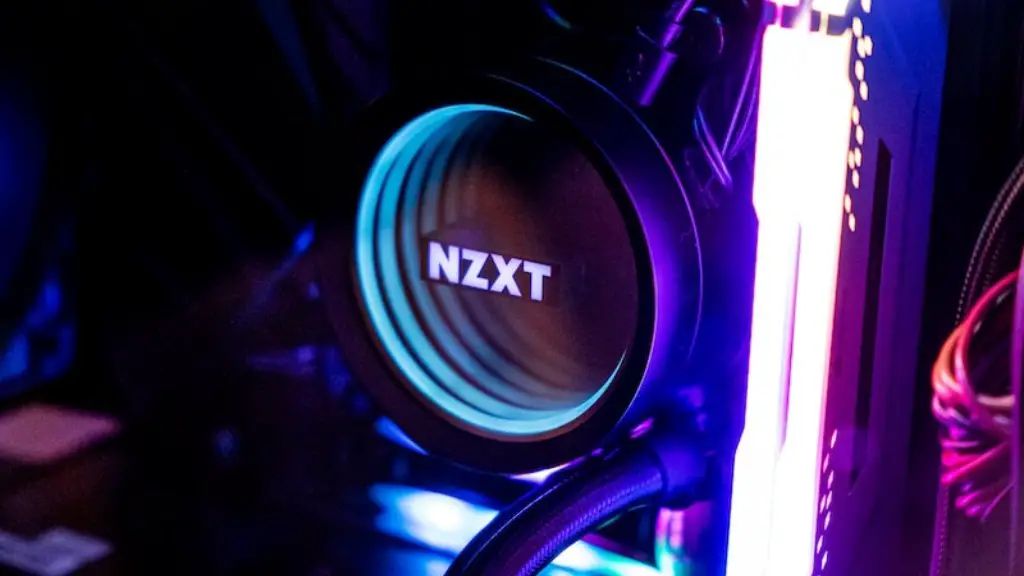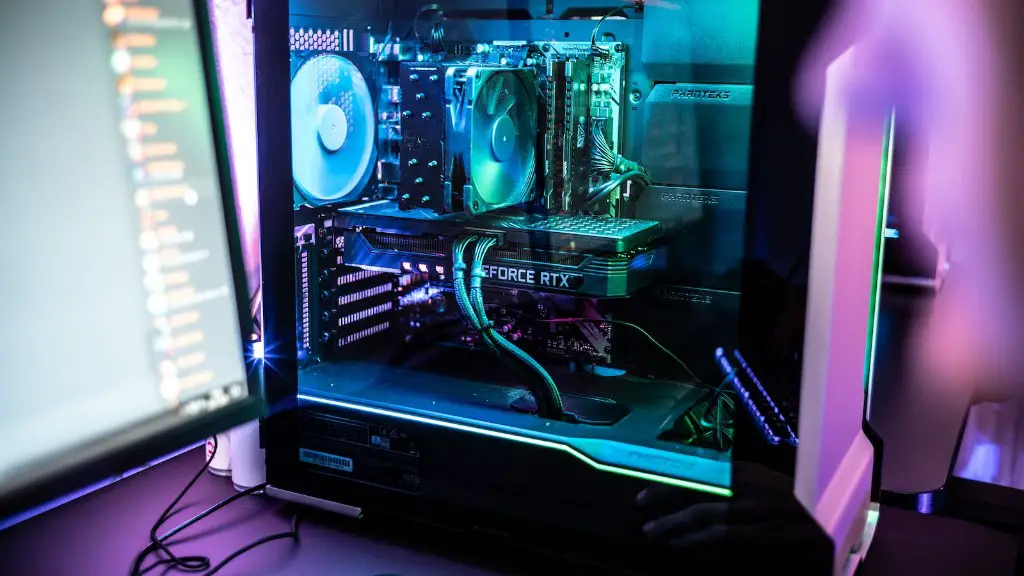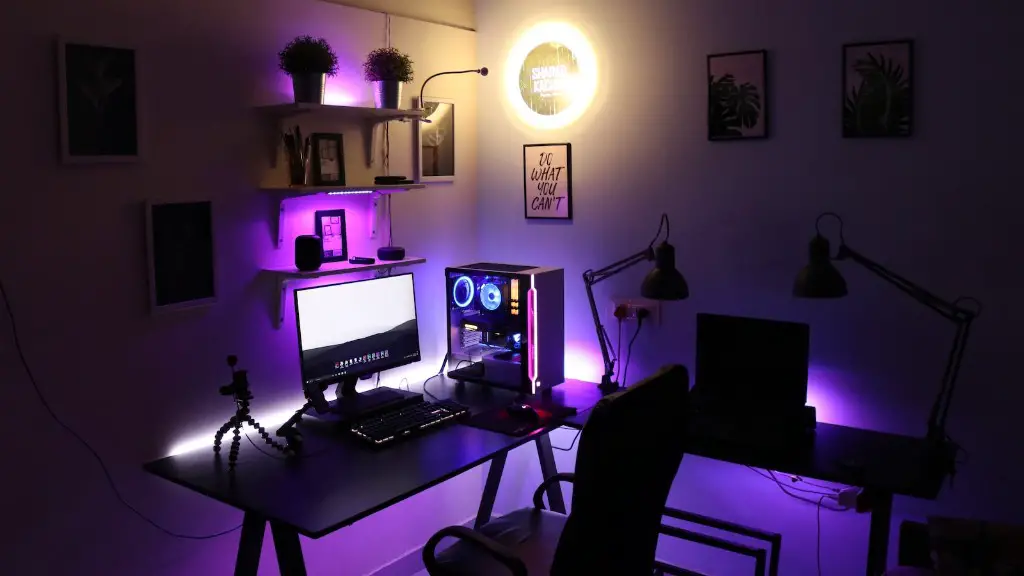There is no single definitive answer to the question – “What’s the best motherboard for a gaming PC?” Instead, it depends on the customer’s needs, budget and the type of gaming they are interested in. When selecting the right motherboard for a gaming PC, three key aspects must be considered: form factor, features and graphics capabilities.
The form factor determines the size and shape of the motherboard, so it must be compatible with the PC case. Generally, the most popular form factors for gaming PCs are Mini-ITX, ATX and Micro ATX, with ATX being the largest. Features to look out for include support for the latest GPU and CPU technology, multiple memory slots for memory upgradability and additional features such as built-in Wi-Fi or USB 3.0 ports.
Graphics capabilities must also be taken into account when shopping for motherboards. This can be a make-or-break factor as GPUs are a major component of a gaming PC’s performance. A motherboard should have enough PCIe x16 slots to support your desired graphics cards, as well as enough power connectors to provide adequate power to the cards.
The best decision will also depend on a customer’s budget. The more expensive motherboards offer the latest technology across the board, more robust feature sets and better support. While these may be ideal for the most demanding gamers, they are not always necessary. Mid-range boards may provide plenty of graphics power and features, but they come at a more reasonable price.
Finally, it is important to consider how the motherboard will be used. If a customer wants to overclock their CPU or GPU, they should look for a motherboard with good overclocking features. For those who want to use multiple GPUs, look for boards that feature multiple PCIe x16 slots and multi-GPU support.
ATX Versus Mini-ITX and Micro-ATX Motherboards
ATX motherboards are by far the most popular choice for gaming PCs. ATX boards consist of one large PCB and come in various sizes, with the largest being the ATX eATX format. These boards typically have more features, a greater number of PCIe slots, larger cooling solutions, more USB ports and more robust power delivery systems, making them ideal for gaming.
Smaller form factors such as Mini-ITX and Micro-ATX are gaining more popularity among gamers as they can fit into smaller cases and save space. These boards have fewer slots, fewer ports and fewer features than ATX boards, but they are also much more affordable.
Mini-ITX boards are the smallest form factor and are typically used for small form factor gaming PCs or office PCs. Despite their small size, these boards still offer enough features for most gaming PCs. On the other hand, Micro-ATX boards offer more features than Mini-ITX boards, making them more suitable for gamers who need more expandability and features than what a Mini-ITX board can offer.
As with most technology purchases, it is best to consider the customer’s needs, budget and desired features when choosing a motherboard for a gaming PC. Whether you choose an ATX, Mini-ITX or Micro-ATX motherboard, you can be sure that there are motherboards on the market suitable for every level of gaming.
Cooler Size
Choosing the right size of the cooling system for the gaming PC is essential. The amount of heat generated by a gaming PC can reach extreme levels, meaning that an inadequate cooling system won’t be able to cope. If a customer wants to overclock or push their components to the limit, it may be necessary to use a larger cooler to ensure sufficient cooling capacity.
The size of the cooler is dictated by the form factor of the motherboard. On ATX motherboards, large coolers can be used as there is plenty of space on the PCB, while on Mini-ITX and Micro-ATX boards the selection of coolers is much more limited and small-sized coolers are favoured.
It is important to ensure a good airflow within the case. The cooler should fit just snugly as too much space may inhibit airflow, but also make sure there is adequate ventilation to ensure the airflow is suitable for the cooler. If the cooler is too large and causes a decrease in airflow, the components may not get enough cooling, resulting in degraded performance.
If a customer wants to overclock or push their components to the limit, a liquid cooling system may need to be considered. Liquid coolers are more expensive than air coolers, but they offer superior performance, allowing for better overclocking.
Intel vs AMD Motherboards
When choosing a motherboard for a gaming PC, one of the key choices between Intel- or AMD-based motherboards. Intel CPUs have been the industry standard for many years, with AMD emerging as a serious contender in recent years with its Ryzen CPUs. Both platforms have advantages and disadvantages.
Intel CPUs tend to offer superior single-threaded performance, making them ideal for playing games. AMD CPUs, on the other hand, tend to offer better multi-threaded performance, which is beneficial for content creators and power users. In terms of motherboards, both platforms offer extensive selection, ranging from budget to ultra-high-end models.
When choosing between an Intel- or AMD-based motherboard, a customer should consider the platform they plan to use and the games they plan to play. If a customer only wants to play games and doesn’t plan to do any content creation or intense multi-threaded tasks, Intel may be the better choice. If a customer wants to do content creation or heavy multi-threaded tasks, AMD may be the better choice.
It is important to note that there is no clear-cut winner between Intel- and AMD-based motherboards — it depends on the customer’s needs, budget and desired features. Both platforms offer good performance, plenty of features and wide selection of motherboards.
Research Before Buying
No matter which motherboard a customer chooses, it is important to do plenty of research before making a purchase. Read reviews, compare prices and research the features that the motherboard offers to ensure that it fits the customer’s needs. This will help them narrow down the selection and make sure they choose a motherboard that is right for their gaming PC.
Another important factor to consider is the warranty. Motherboards typically have a 3 year warranty but some manufacturers offer extended warranties. While a warranty is not required, it can provide peace of mind, particularly when a customer needs to replace a defective component or upgrade their components.
Motherboards are essential components of any gaming PC, and the right motherboard can make or break a system. When looking for the best motherboard for a gaming PC, customers should consider their needs, budget, form factor and features needed, and research the available options before making a decision.
How to Install a Motherboard
Installing a motherboard correctly is paramount to ensuring a stable gaming PC. The process of installing a motherboard is not complicated and does not require any specialist tools, but it is important to follow the instructions carefully and ensure that all components are firmly attached.
The first step of the installation process is mounting the motherboard on a motherboard tray or stand. Next, the processor should be placed in its socket and the heatsink installed on top of it. The RAM and video card should be installed next, followed by any other components such as sound cards and wireless adapters.
The next step is connecting the power, reset and LED cables to the motherboard. These cables are typically colour-coded and should be firmly connected to the correct pins on the motherboard. After that, the cables for the case fans and CPU fan should be connected to the motherboard.
Finally, the cables for storage devices such as hard drives and optical drives should be connected. It is important to double-check that all cables are connected correctly and securely, and that there are no loose cables in the case.
Conclusion
When selecting the right motherboard for a gaming PC, customers should consider the form factor, features and graphics capabilities of the motherboard. ATX, Mini-ITX and Micro-ATX boards all have their advantages and disadvantages, and the best option depends on budget and desired features. Other factors to consider include cooler size, Intel vs AMD and researching before buying. With careful consideration, customers can ensure that they find the right motherboard for their gaming PC.




